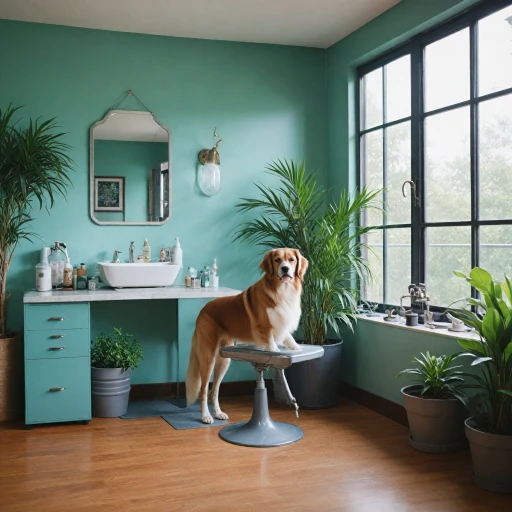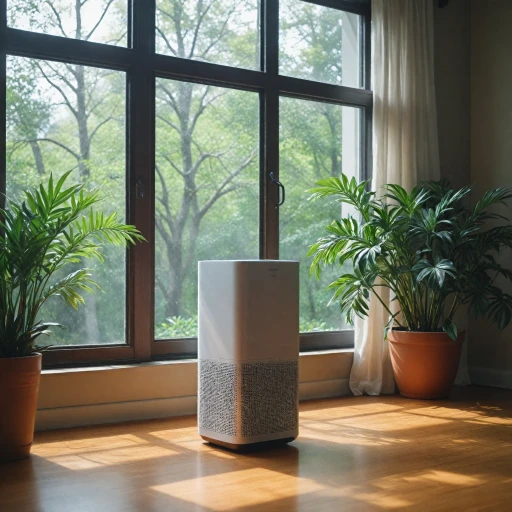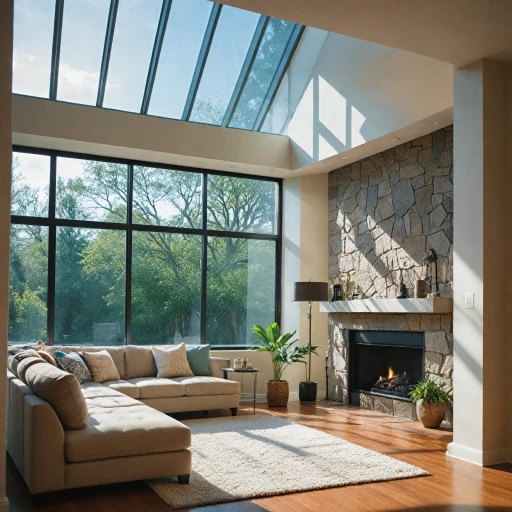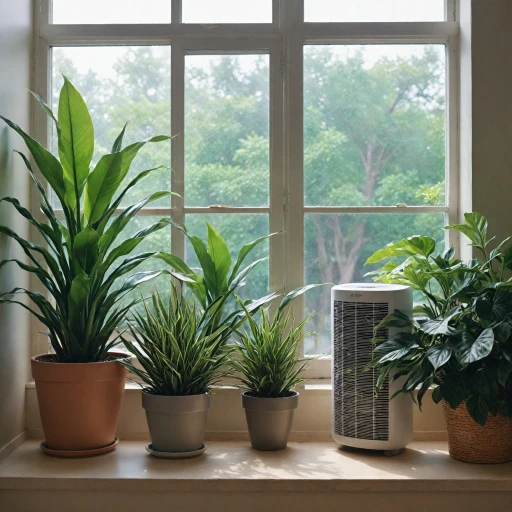The Science Behind Ulpa Filters
Exploring the Sophisticated Mechanism of Ulpa Filters
At the core of advanced air purification technology lies the Ultra-Low Penetration Air (ULPA) filter, designed to capture the smallest of particles that can elude conventional filters. When discussing how to effectively reduce airborne particles, including those as minute as 0.12 microns, ULPA filters stand out due to their high efficacy. They are known to trap up to 99.999% of particles, making them a superior choice for maintaining superior indoor air quality.
While often compared to HEPA filters, ULPA filters exceed these true HEPA standards, particularly in environments demanding exceptional filtration. Industries dealing with sensitive materials or chemicals gases, such as laboratories and high-tech manufacturing sectors, benefit greatly from ULPA's level of air purification.
Interestingly, the comprehensive nature of ULPA filters works best when combined with other systems, including carbon filters. Activated carbon plays a crucial role in neutralizing odors and volatile organic compounds, which ULPA filters might not manage efficiently on their own. Assessing room size and the specific needs of indoor air determines the kind of filter replacement essential for the best air cleaner setup.
When evaluating products for home or professional use, it's essential to consider the type of particles that need to be managed. While a standard room air purifier can handle common dust and pollen, ULPA filters are particularly beneficial for environments concerned with ultra-fine particles and airborne chemicals. Making an informed decision on which purifier to choose involves understanding the media type and grade options available in the market.
Discover more about holistic air filtration strategies through insights on whole-house air filtration UV systems, which can complement ULPA filters in offering enhanced protection against pollutants.
Ozone Generators: How Do They Work?
Mechanism of Ozone Generators in Air Purification
Understanding how ozone generators function can provide insight into their role in air purification systems. Ozone generators are designed to produce ozone—a molecule composed of three oxygen atoms—which is a powerful oxidizing agent capable of neutralizing odors and reducing contaminants in the air. These devices utilize an electrical discharge or ultraviolet light to split oxygen molecules, subsequently forming ozone.
While ozone can be effective in eliminating even tough odors and certain airborne particles, it is important to consider the concentration levels. Higher concentrations may be suitable for industrial settings but could pose health risks in residential environments. Proper usage and control mechanisms are essential to ensure safety.
The inclusion of ozone generators in products like Airpura air purifiers can enhance the removal of odors and chemicals, provided they are used correctly. When selecting an air purifier, one must weigh the benefits and compatibility of combining these systems with other filtration technologies such as HEPA and carbon filters. Utilizing an integrated air filtration system ensures a comprehensive approach to improving indoor air quality.
Combining Ulpa Filters with Ozone Generators
Merging Cutting-Edge Air Cleaning Technologies
The concept of combining Ulpa filters with ozone generators in air purifiers represents a powerful approach to enhancing indoor air quality. Ulpa filters, a step above HEPA filters, are designed to capture particles as small as 0.1 microns, ensuring that even the tiniest airborne contaminants cannot escape. These filters work incredibly well in trapping dust, pollen, mold spores, and various other particles that compromise air purity. On the other hand, ozone generators utilize ozone's natural oxidizing properties to neutralize odors and eradicate airborne bacteria and viruses. When employed cautiously, ozone generators can significantly reduce chemicals and odors lingering in your home. By integrating these technologies, manufacturers can develop advanced air purifiers that offer comprehensive air cleaning capabilities. These products effectively tackle particles and gases, providing a cleaner atmosphere. For instance, an air purifier combining Ulpa filters and ozone generators is ideal for rooms where conventional air cleaning methods fall short, especially in spaces prone to chemicals and gases that often accompany indoor activities. Such a system provides a robust solution, filtering out particles and eliminating unwanted odors. When shopping for the best air purifier, it's crucial to evaluate the combined efficacy of Ulpa filters and ozone generators against the specific air quality challenges you face. Assess room size and other considerations to ensure the purifier's performance meets your needs and provides a satisfactory return on investment. For more insights on choosing the right air purifier, explore benefits of Aerus Pure and Clean air purifiers.Applications and Suitability
Integrating Ozone Generators and Filters for Enhanced Performance
When choosing an air purification system with both Ulpa filters and ozone generators, it's essential to understand how this combination can elevate the air quality in various settings. Using both technologies provides complementary benefits, ensuring a comprehensive approach to managing different contaminants in indoor spaces.
Ulpa filters are known for capturing ultra-fine airborne particles, including dust, pollen, and other minuscule pollutants, down to 0.12 microns. Still, when paired with an ozone generator, these systems target not only particulate matter but also odors, bacteria, and chemicals. Ozone generators assist in breaking down stubborn smells and organic compounds that filters alone may not effectively eliminate.
For instance, environments like industrial facilities or areas with high chemical activity often experience fumes and odors that are difficult to manage. In such cases, the combination of filtering particulates with an Ulpa or HEPA filter, and purifying the air with ozone, stands as a viable solution.
- Customizable Solutions: With products like Airpura, you can select air purifiers that fit the specific needs of your room size, be it a smaller room or a larger space requiring intense purification.
- Versatile Applications: Beyond residential applications, these systems are suitable for improving indoor air quality in commercial settings, medical environments, and other spaces where air quality control is critical.
It is vital, however, to ensure the correct balance between filter and ozone settings, as excessive ozone may pose health risks. Therefore, it is advisable to shop wisely and compare different models, such as Austin Air and other true HEPA models, which may utilize activated carbon filters alongside pre filters for enhanced performance. Assessing the media type and filter replacement needs can aid in achieving the desired air quality level.
Safety Considerations and Precautions
Ensuring Safety in Air Purification
When considering an air purifier equipped with both Ulpa filters and ozone generators, it's crucial to prioritize safety. Understanding the filtering process, knowing how ozone generators function, and combining these technologies inform a large part of this assessment.- Understanding Exposure Limits: Ozone is known for its ability to reduce odors and eliminate airborne particles, but it must be handled carefully. In high concentrations, ozone can be harmful to health. Knowing the safe levels is essential for anyone using an air purifier with an ozone generator.
- Proper Usage Guidelines: It's vital to use these products according to the manufacturer’s guidelines. This often means ensuring that the room is unoccupied when ozone is being generated. The time for using the purifier must be managed to avoid overexposure.
- Maintenance and Monitoring: Regular maintenance, like changing a carbon filter or pre filter, ensures the air purifier runs effectively without emitting harmful levels of ozone. Monitoring indoor air quality helps in adjusting the use of the ozone feature as needed.
- Checking Certifications: Look for air purifiers that have been tested and certified for safety. Certifications related to true HEPA and activated carbon features should also be noted as they guarantee that particles and chemicals gases are efficiently controlled.
- Auditing Room Size and Needs: Not every air filter is suitable for all environments. The air quality needs might change with room size or specific airborne chemicals and odors present.
Choosing the Right Air Purifier for Your Needs
Factors to Consider When Selecting an Air Purifier
Choosing the right air purifier can be a daunting task given the wide array of products available. Here are some key aspects to consider:- Filter Type: A true HEPA filter is essential for capturing small particles, but when dealing with chemicals and gaseous pollutants, an air purifier equipped with a carbon filter or activated carbon is crucial.
- Room Size: Evaluate the room size where the air purifier will be used. Products are often rated based on the room air coverage they can handle, ensuring maximum efficiency.
- Price and Value: While evaluating the cost, it's important to compare the price with the features offered. An air purifier with ULPA capacities might be higher priced but offers a higher grade of filtration compared to a conventional HEPA filter.
- Filter Replacement Costs: Consider the long-term expenses including filter replacement. Some units, like those from Austin Air, might have a longer-lasting filter media type, which can be more cost-effective in the long run.
- Specific Needs: Identify if your primary concern is airborne particles, such as microns, odors, or chemicals gases. This will guide you to select specific models that prioritize the removal of these contaminants.
- Additional Functions: Air purifiers that combine ULPA filters with ozone generators not only capture particles but also address odors, although investigating the safety considerations of ozone generators is imperative.





